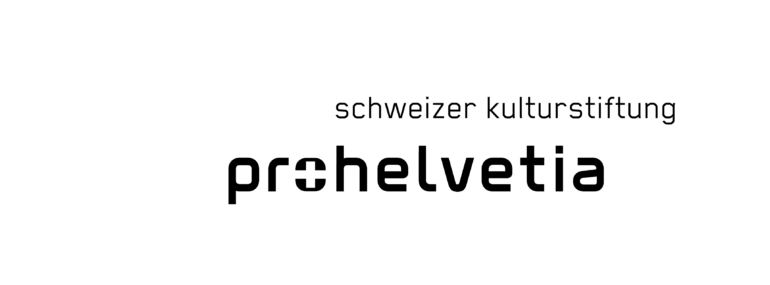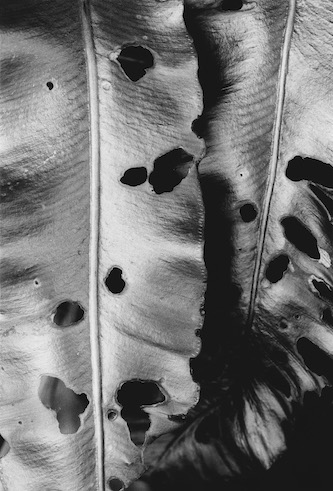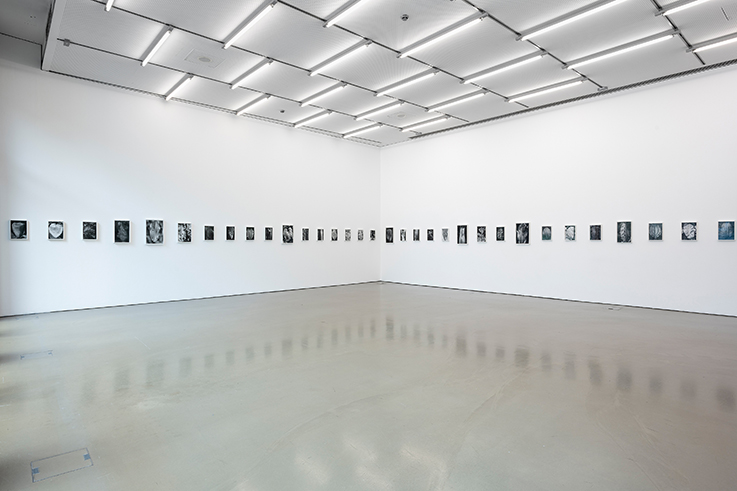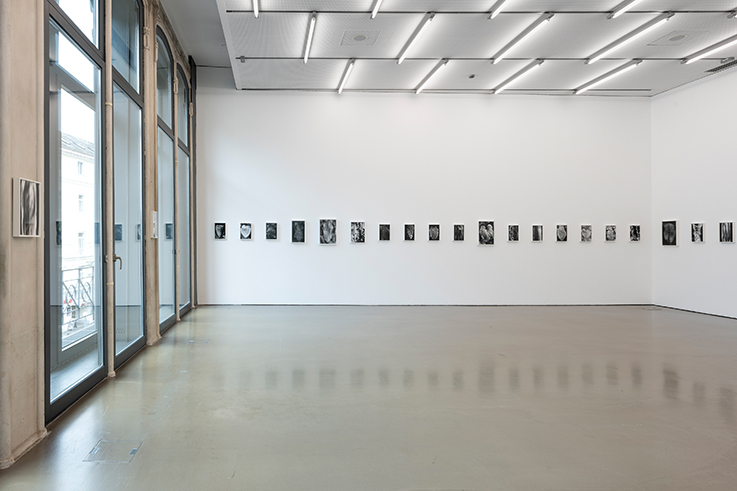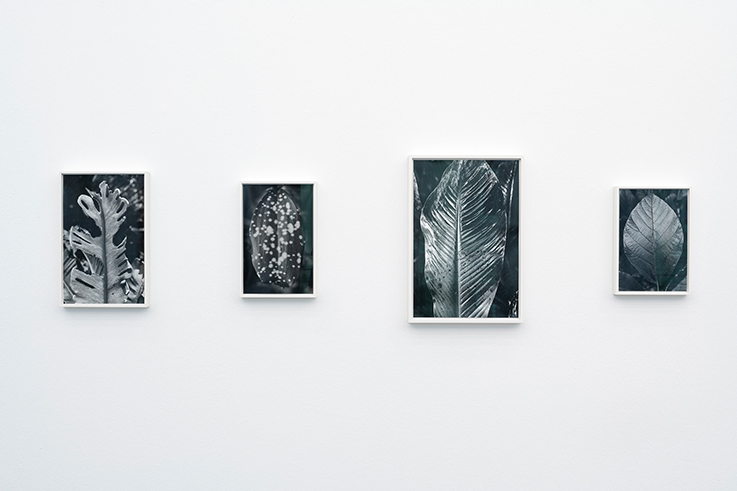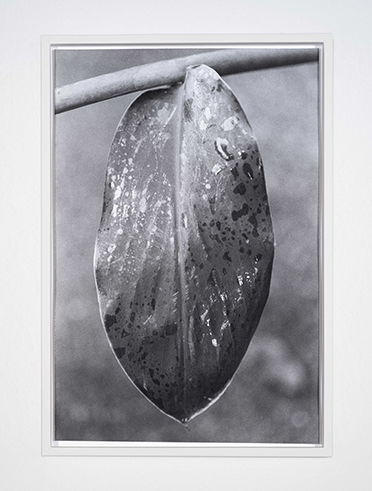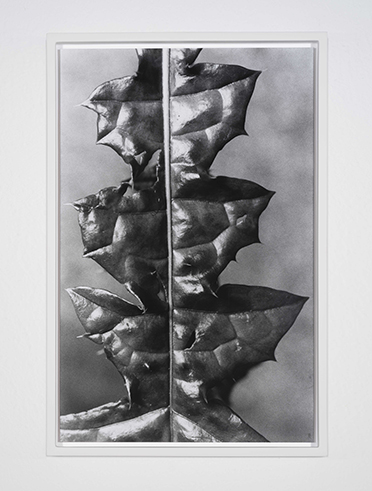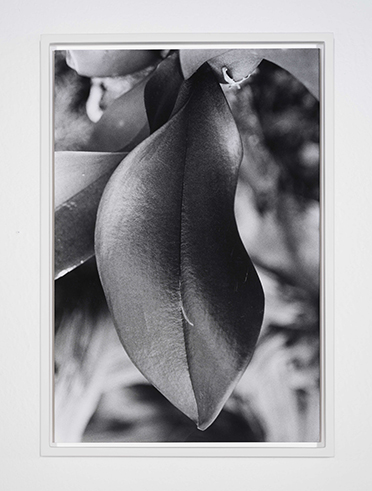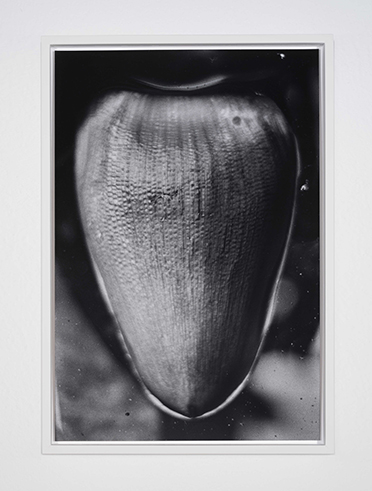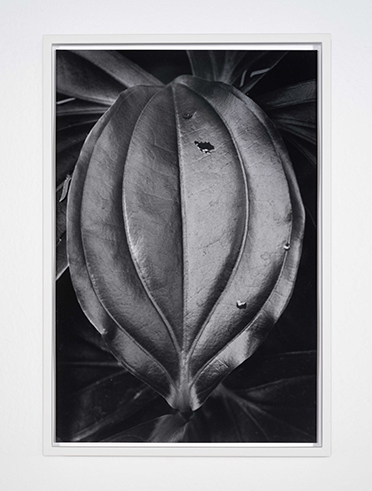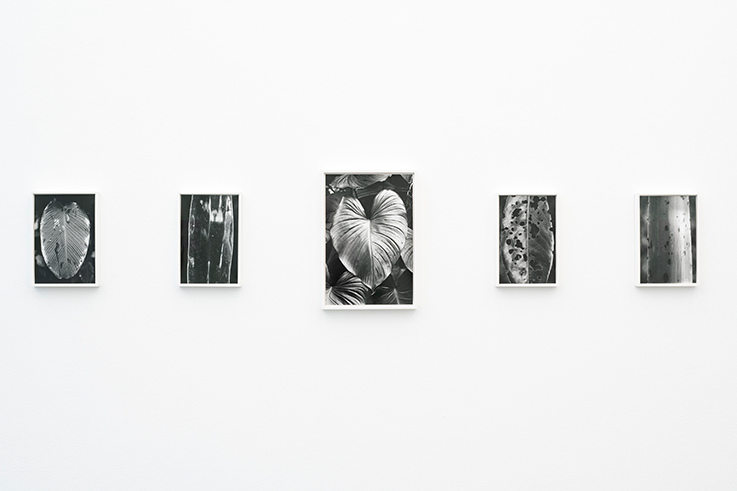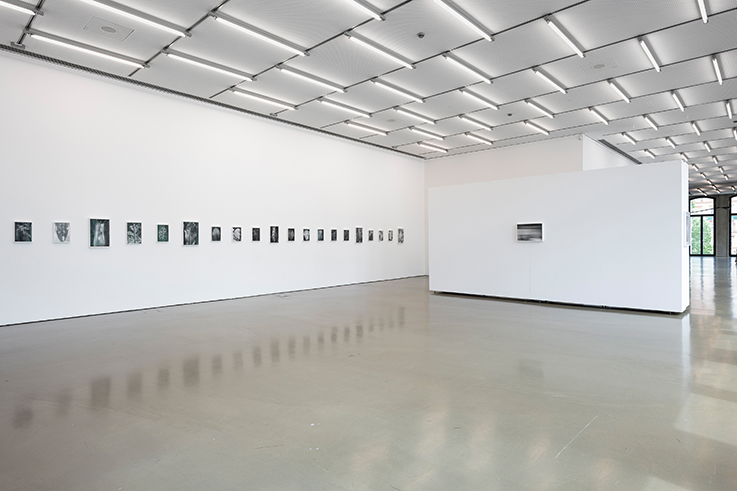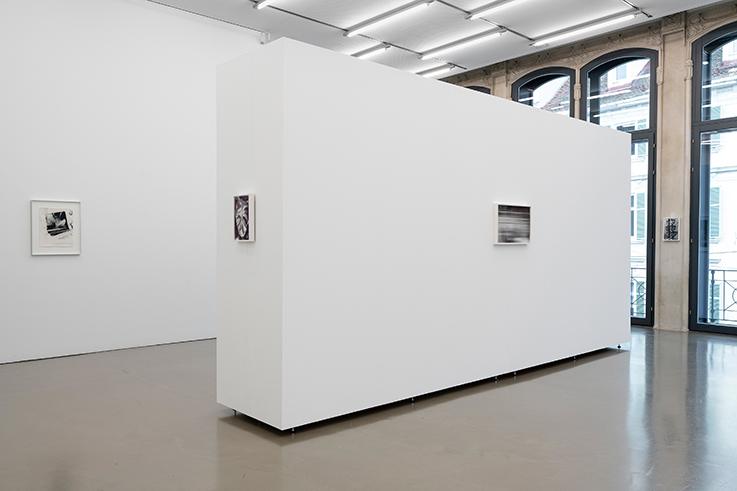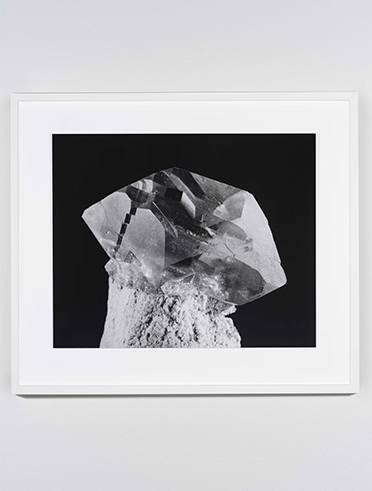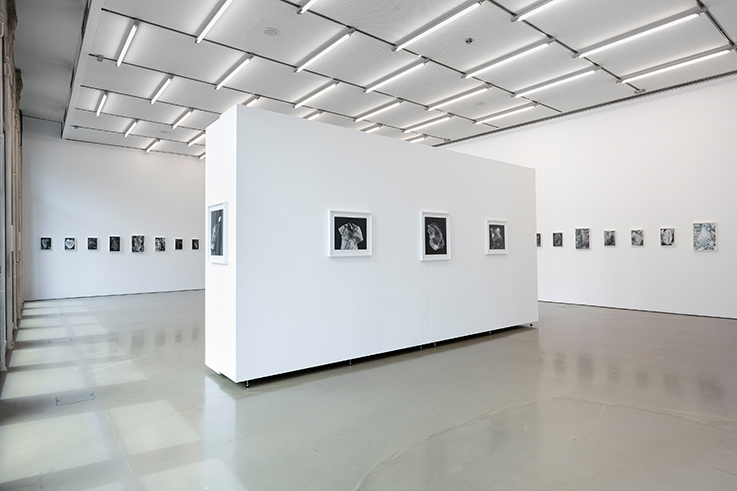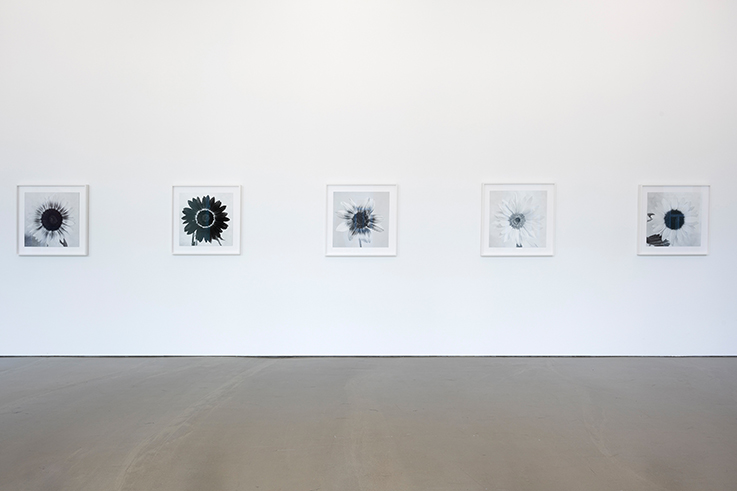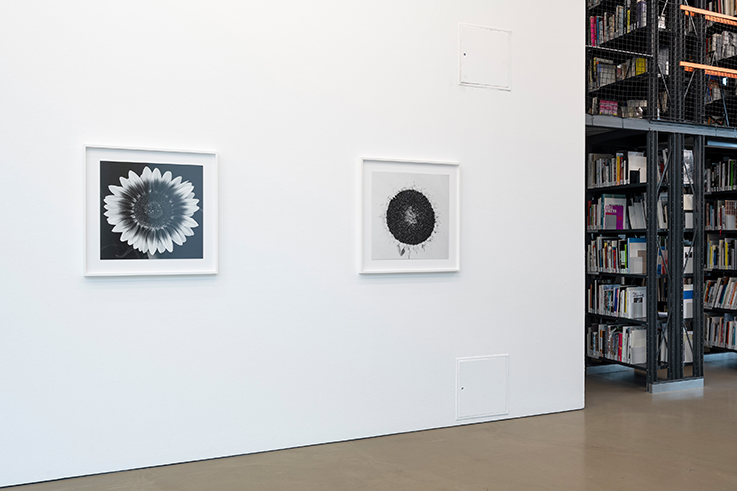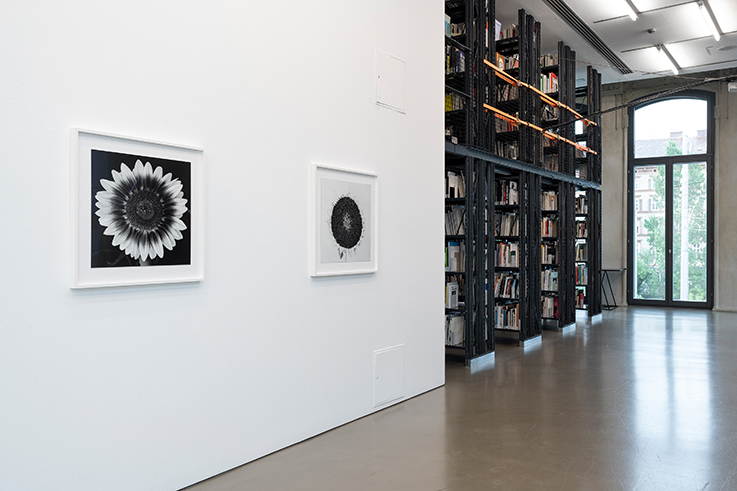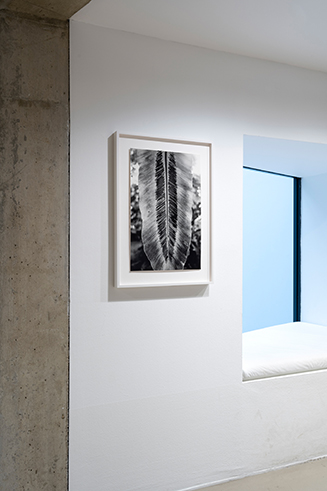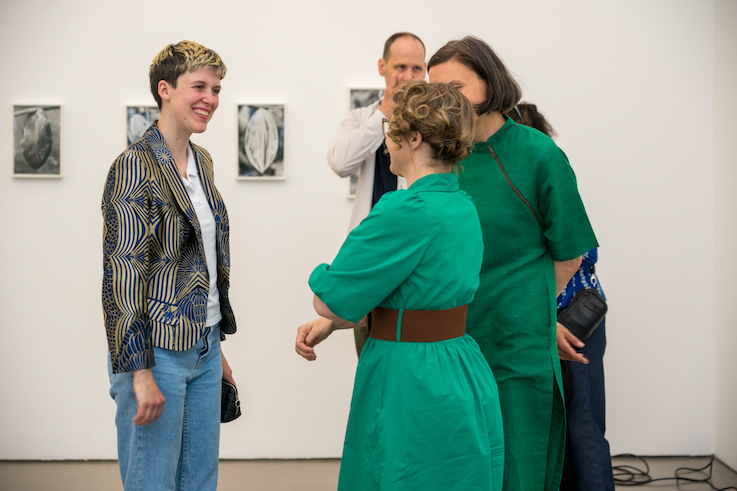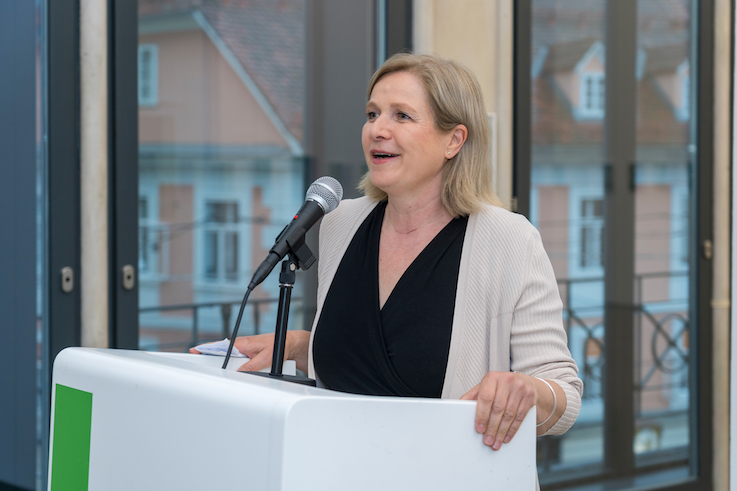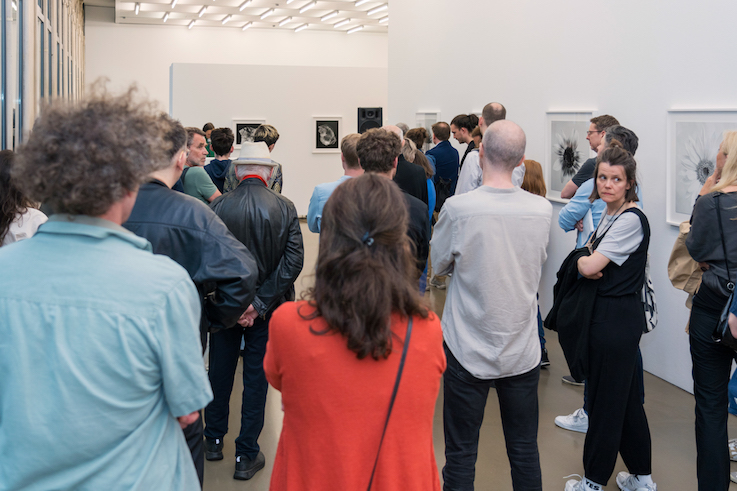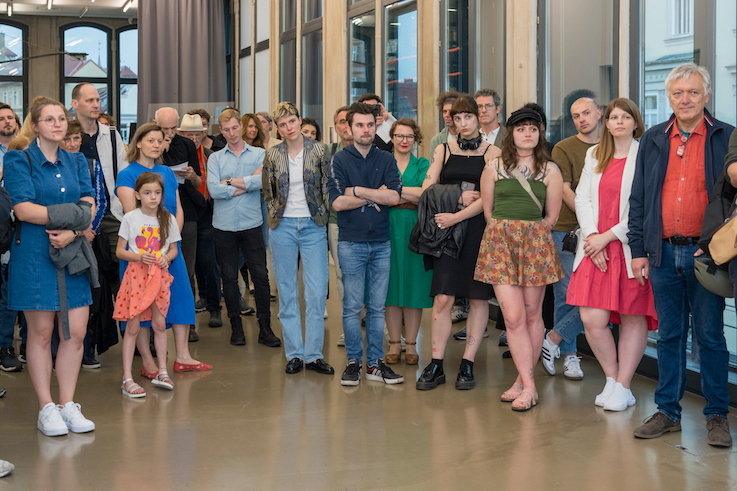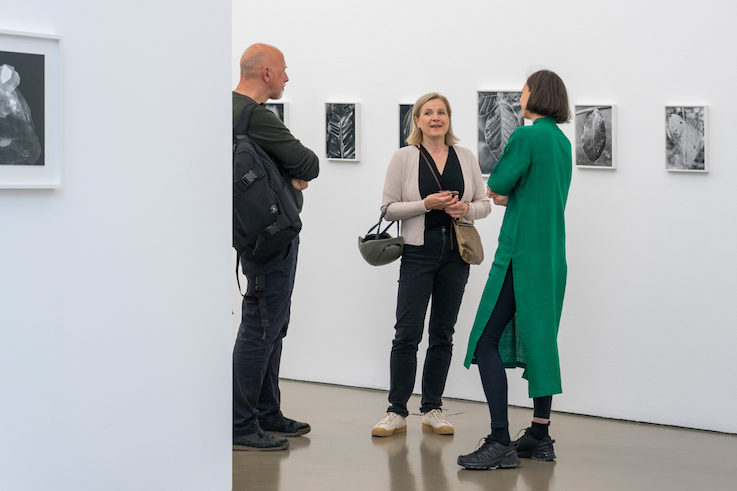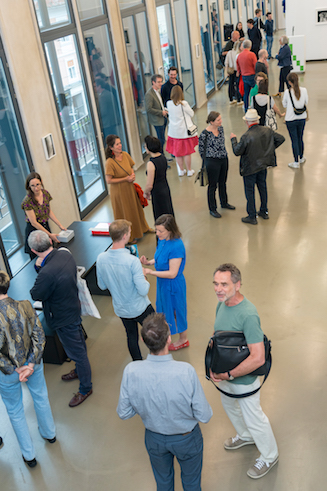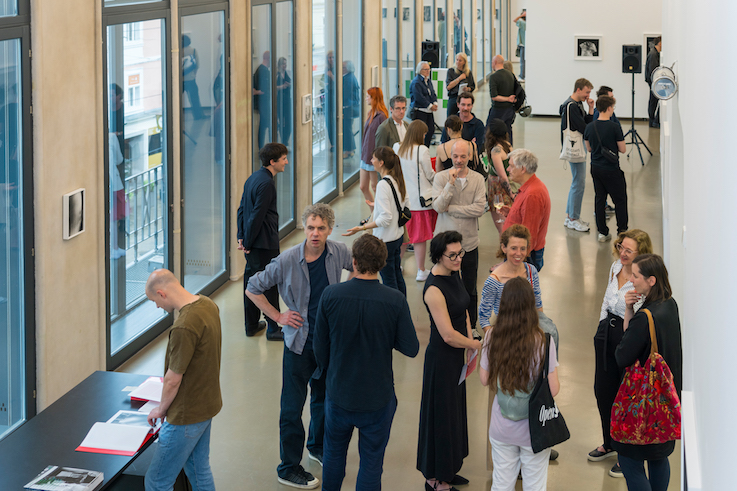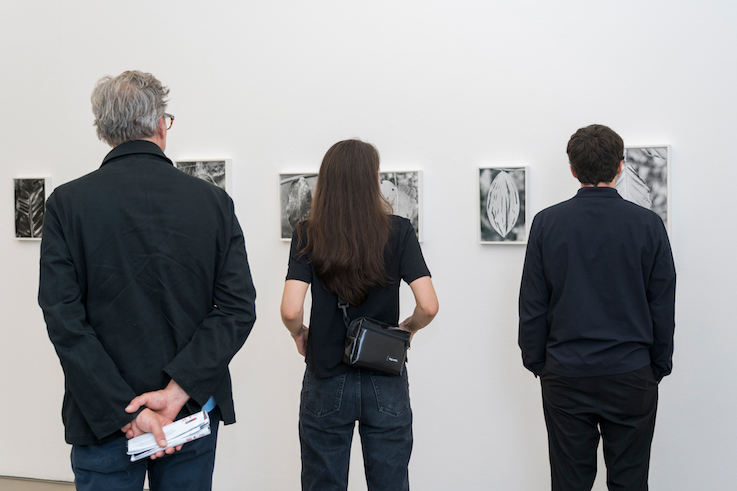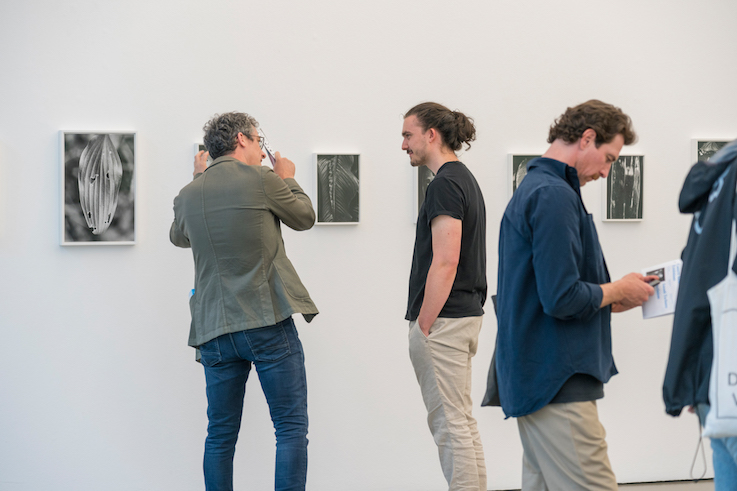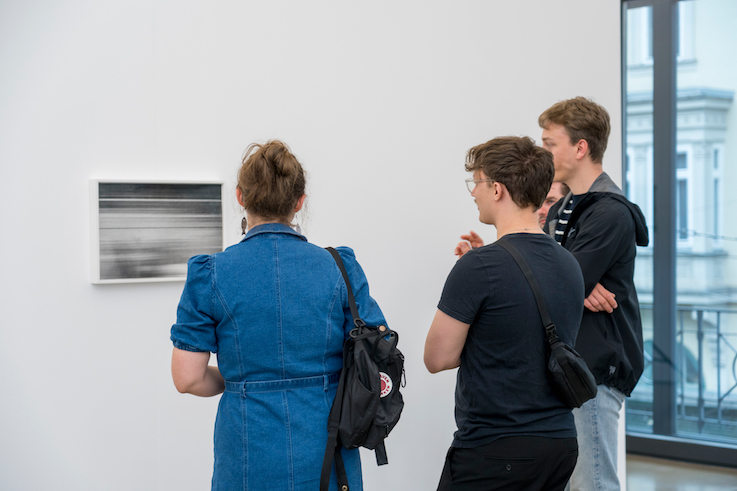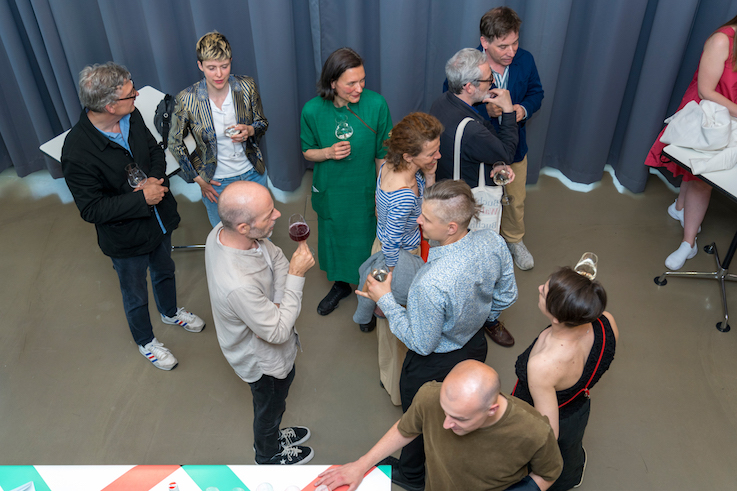Anouk Tschanz: Actinism
Infos
Opening
7.6.2024, 6 p.m.
Artist’s tour with
Anouk Tschanz
8.6.2024, 2 p.m.
Duration
8.6. – 18.8.2024
Opening hours
Tue – Sun and bank holidays
10 a.m. – 6 p.m.
Guided tours
German, English
Free, on request:
exhibitions@camera-austria.at
+43 316 81555016
Curated by
Anna Voswinckel
Intro
Anouk Tschanz, in her work, delves into the process of seeing and perceiving the world around us, and of reproducing it through photographs. Amid a visual culture characterized by accelerated digital image generation, Tschanz purposely employs the elaborate technique of analogue black-and-white photography, with the aim of training the focus on the perception of each individual image. In the exhibition, three recent photographic series are combined, all touching on classic subjects found in nature photos: Steine (Stones, 2024), Sonnenblumen (Sunflowers, 2023), and Blätter (Leaves, 2019–ongoing). The latter take center stage in the Actinism project. The staggering number of leaves with their idiosyncrasies of form can be read as an examination of biodiversity, of climatic conditions and weather effects. At the same time, in all three photographic series, the artist deals with processes of image creation, with surfaces, materiality, light, and depth. The word Blatt has two meanings—“leaf” as plant and “sheet” as (photo) paper—which gives rise to a polarization of nature and culture. In this same vein, Tschanz’s dense image compositions oscillate between representation and abstraction, encouraging us to view her photographs up close. Actinism is Tschanz’s first solo exhibition at a venue outside of Switzerland.
On the occasion of the exhibition, an eponymous publication is being published by Jungle Books, St. Gall.
Anouk Tschanz (b. 1994 in Bern, CH) studied at the École cantonale d’art de Lausanne (ECAL) (CH), the Universität der Künste (UdK) Berlin (DE), and the Glasgow School of Art (GB). She lives and works in Zurich (CH). Her recent solo exhibitions were shown at Coalmine, Winterthur (CH, 2021), and LONGTANG, Zurich (2020).
Read more →Anouk Tschanz: Actinism
“Photography is neither a human representation nor a tool, [Walter Benjamin] argues, but rather one of the primary means through which the world discloses itself to us. What it reveals is uninformed by human consciousness—not just because it exceeds our optical capacities, but also because nature ‘speaks’ a different language to the camera than it does to the human eye: one based on analogy.”¹ Making reference to the aspect of indexicality, the art historian Kaja Silverman notes that “photography’s truth is disclosive, rather than evidentiary.”² Silverman likewise identifies in Anna Atkins’s famous mid-nineteenth century cyanotypes of algae and ferns an artistic sensitivity for analogies of form, which Atkins describes, independently of a botanic taxonomy, as “impressions of the plants themselves.”³ Contrary to William Henry Fox Talbot, who saw photography as “impressed by the agency of light alone” in disclosing the world, Silverman sees us—as human operators—as being constantly challenged by photography to establish relationships by recognizing analogies.4
Anouk Tschanz, who pursued a degree in the visual arts rather than formally studying photography, has been employing analogue black-and-white photography as an artistic means of expression for many years now. Playing a decisive role here is the ability to influence the pictures taken by making artistic decisions during the film-developing and enlargement process in the darkroom. Here she produces her handmade prints using elaborate techniques like split-grade filtering, image masking, post-exposure, or dodging.
Already during her studies in the bachelor’s program at the École cantonale d’art de Lausanne (ECAL), Tschanz began to explore the chemical and material fundaments of photography in experimental and conceptual projects. In order to better understand the medium, she engaged in a “reverse engineering” of sorts, going back to photography’s very beginnings, using self-made pinhole cameras, mixing her own photo emulsion, or examining different shades of color on developed and not-yet-developed paper. Again and again photographic series emerged from these investigative steps as byproducts, such as Out Of Your Body (2018). In this work, she took the animal-based glue sheets needed for mixing the bone glue and placed them in the darkroom directly onto the enlarger’s negative holder and then printed them like a photographic negative, filtered in color. While investigating red light filtering in the darkroom, Tschanz came across the term “actinism,” which describes how the photochemical potency of light touching photosensitive surfaces is measured—and which lends the exhibition its title. Since the term in English reads like a play on words with “activism,” it could also subtly allude to the question of (one’s own) ability to act in response to physical but also global ecological processes.
Many of Tschanz’s early works can be understood as approaches to penetrating the medium she was using to create her art. Since her university days, Anouk Tschanz’s work has evolved from media-reflexive to documentary, from abstraction to realism, and from color to black and white. The medium of photography, however, has remained ingrained in her works over time. Tschanz invites us to look at her images more closely—be it randomly exposed printing plates, reproduced sheets of photo paper, or the leaf of a shrub.
In the exhibition space at Camera Austria, we first encounter a series of Sonnenblumen (Sunflowers, 2023). The close-up shots in black and white depict radially opening petals, captured by a 6×6 medium-format camera. Some of the plants were photographed outside, others against a neutral studio background. The artist allows us to discover—in these plants cultivated monoculturally on a mass scale—the diverse growth forms and color variations, which are usually omitted from stereotypical renderings of sunflowers. Tschanz forces us to look very closely in order to perceive the sunflowers without their cultural coding (“warmth,” “joie de vivre,” “the Green Party,” “Ukraine,” etc.), gazing beyond the stereotypes.
Newly produced for the exhibition is the series Steine (Stones, 2024), featuring black-and-white photographs of quartzes and crystals against a black backdrop, shot in the studio. Portrait and landscape formats alternate here depending on the shape of the respective stone. The powerful contrasts in lighting lend emphasis to the sharp edges of the quartz; the hard and solid surface of the minerals makes them seem fragile at the same time due to their opacity and the delicate bifurcations. Analogous to the transformation of organic substances into inorganic ones, minerals—like photographs—stand for the preservation of memory; like a fossil, time can become inscribed in a photograph and survive in a form legible in a different way. The stones become a vis-à-vis for the beholder due to the frontal shot, the enlargement, and the mounting at eye level—it is almost as if one could discern faces. Hence, an inversion of subject and object occurs: the semi-precious stones, which we normally view as objects, now take on the guise of a creature gazing back at us.
This observation leads us to the series Blätter (Leaves, 2019–ongoing)—framed solo images in slightly varying formats, mounted in a long row. Tschanz photographed each leaf in the place where it is growing or was cultivated: along streets in cities she has lived in, sites spotted on trips through Europe, in remote meadows in the Alps. One photo was taken last year in Graz. Depending on the given motif, she uses an analogue 35mm camera or medium- or large-format camera. For the pictorial invention, the lighting situation at the moment the photograph was taken is decisive. The Blätter pictures are the main focus of the exhibition Actinism. The overwhelming number of prints and the different forms can also be understood as a reference to biodiversity, to the impact of climate and weather conditions. At the same time, the artist is interested in processes of pictorial creation, in surfaces, materiality, light, depth.
The leaves in Blätter display their own quirks and flaws. Tschanz’s photographs are the opposite of schematic pictures, an inversion of the famous nature photographs of Karl Blossfeldt.5 Her photos were not made in the studio, not removed from their natural environment, not systematized. Anouk Tschanz is not interested in taxonomies, but in analogies: Of what do the leaves remind us? And how can these similarities allow relations to evolve? Although plants had played an only occasional role in Tschanz’s search for motifs earlier on, with the series Blätter the artist then made the move described above, from exploring the medium of photography to engaging with nature.
That nature photography faces fundamental pictorial issues is something that has been affecting the medium since its early use for the purpose of recording the species and populations of plants. It is surely no coincidence that Tschanz’s first photographs of leaves were taken during her time as a visiting student at the Glasgow School of Art, where the history of photography and image theory were main elements of the curriculum.
An indication that Tschanz is aware of these references and issues is given by Untitled (2020), which is presented alone in the exhibition. In this work, the important polarizations evoked by photography come to the fore: those between the given and the made, and thus those of nature and culture. The picture shows a newly exposed, fixed, and rinsed photograph, lying slightly curved atop a second sheet—a leaf of paper rendering a leaf. Drops of water are apparent on the surface of the photo paper. Analogue photography is tied to its material foundations. It is flat and planar, yet the act of our perception allows depth and three-dimensionality to arise. Indeed, Untitled is perhaps the clearest example of a photograph rendering the photographic.
¹ Kaja Silverman, The Miracle of Analogy or The History of Photography, Part 1 (Stanford: Stanford University Press, 2015), pp. 141–42.
² Ibid., p. 10.
³ Ibid., p. 100.
4 Ibid., pp. 11–12.
5 For alerting me to this, I am grateful to the artist Markéta Othová, with whom I corresponded by email about the work of Anouk Tschanz.
Anouk Tschanz (b. 1994 in Bern, CH) studied at the École cantonale d’art de Lausanne (ECAL) (CH), the Universität der Künste (UdK) Berlin (DE), and the Glasgow School of Art (GB). She lives and works in Zurich (CH). Her recent solo exhibitions were shown at Coalmine, Winterthur (CH, 2021), and LONGTANG, Zurich (2020).
Installation Views
Opening
Materials
Partners/Sponsors
